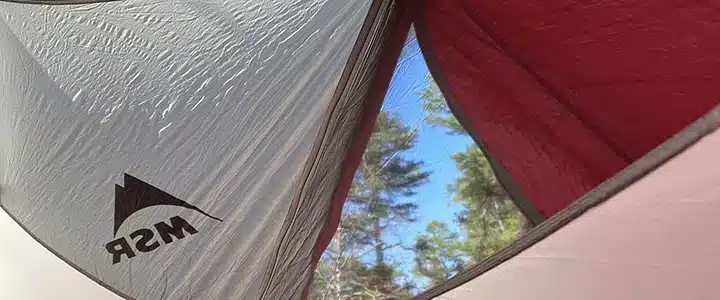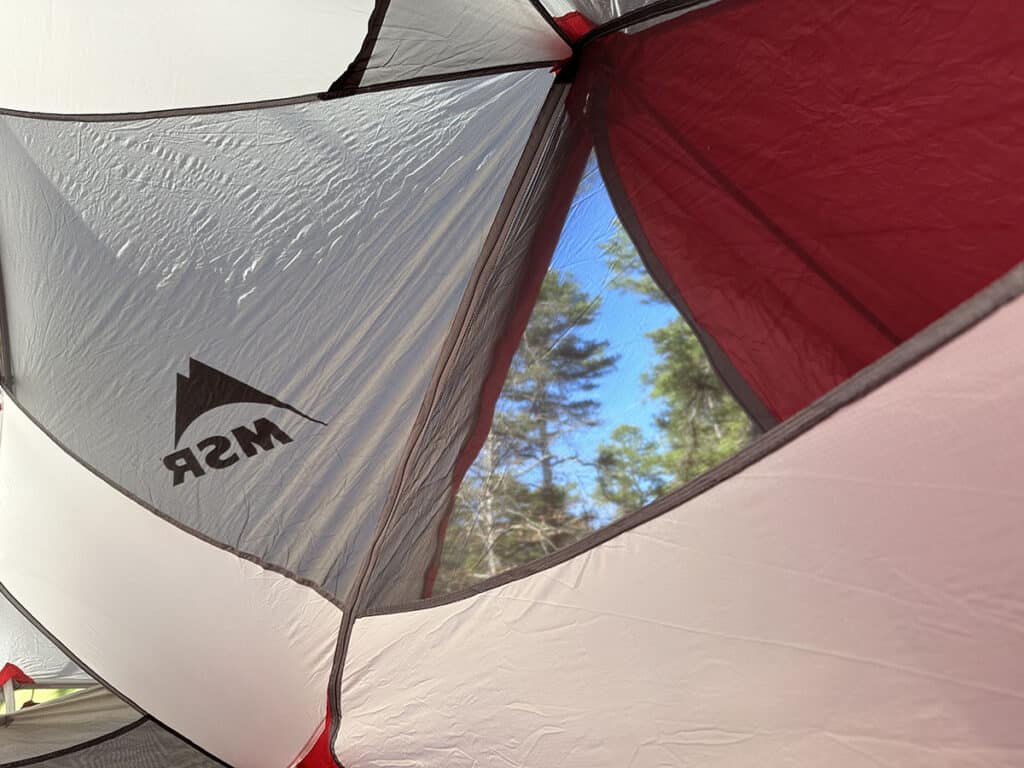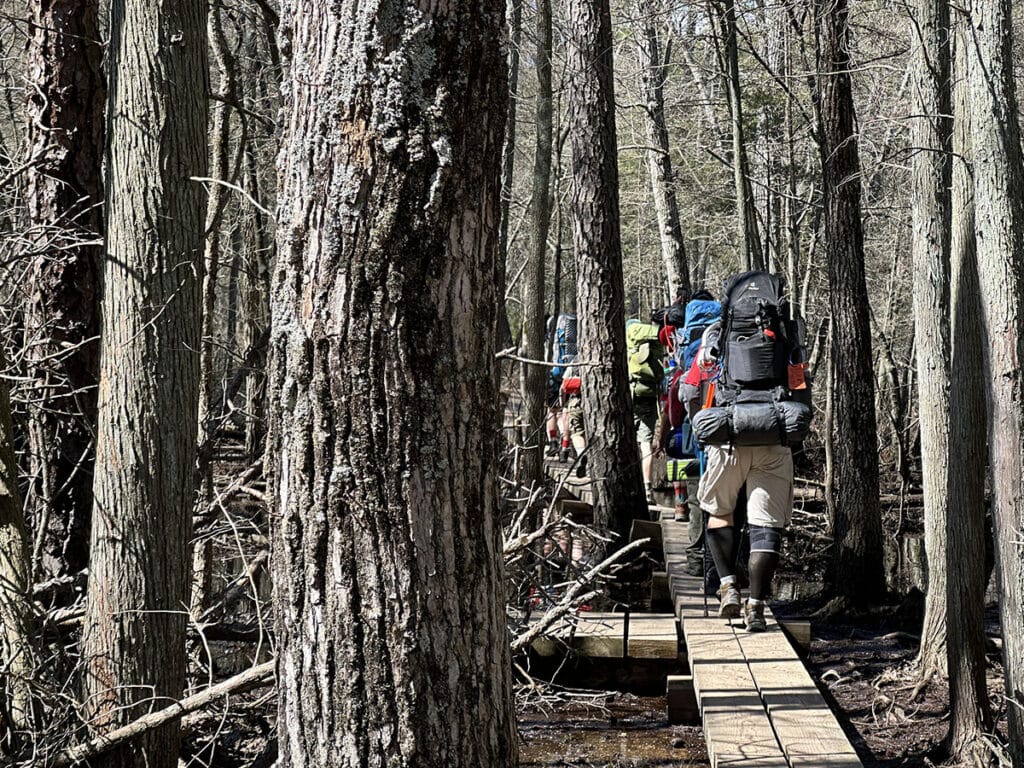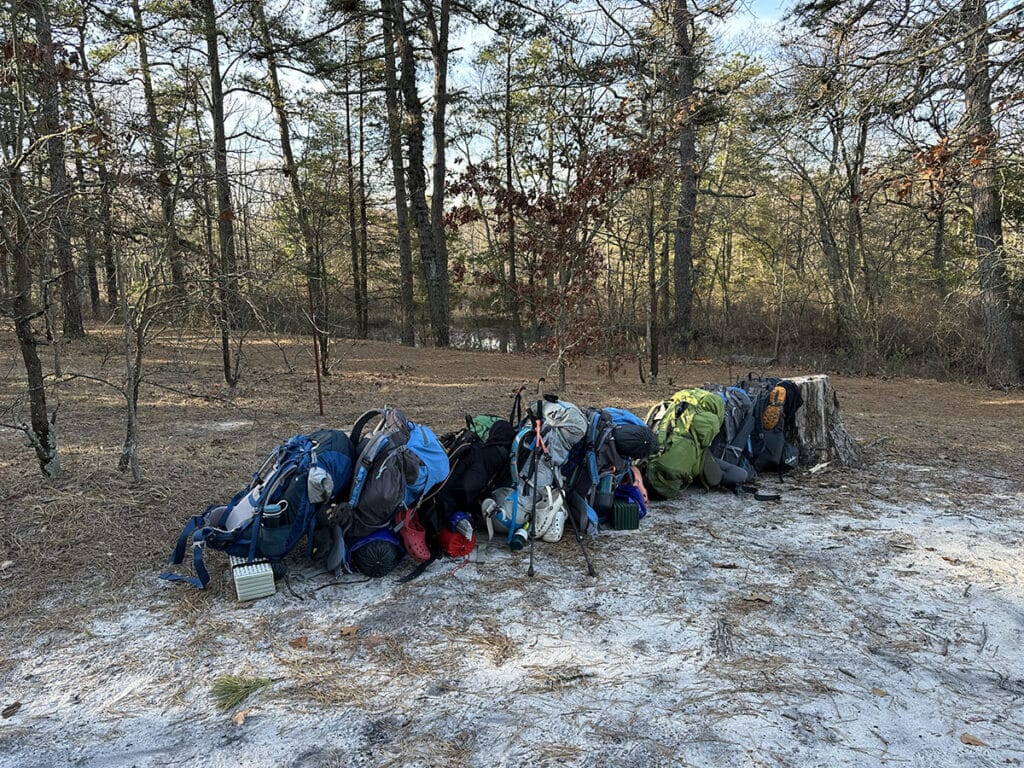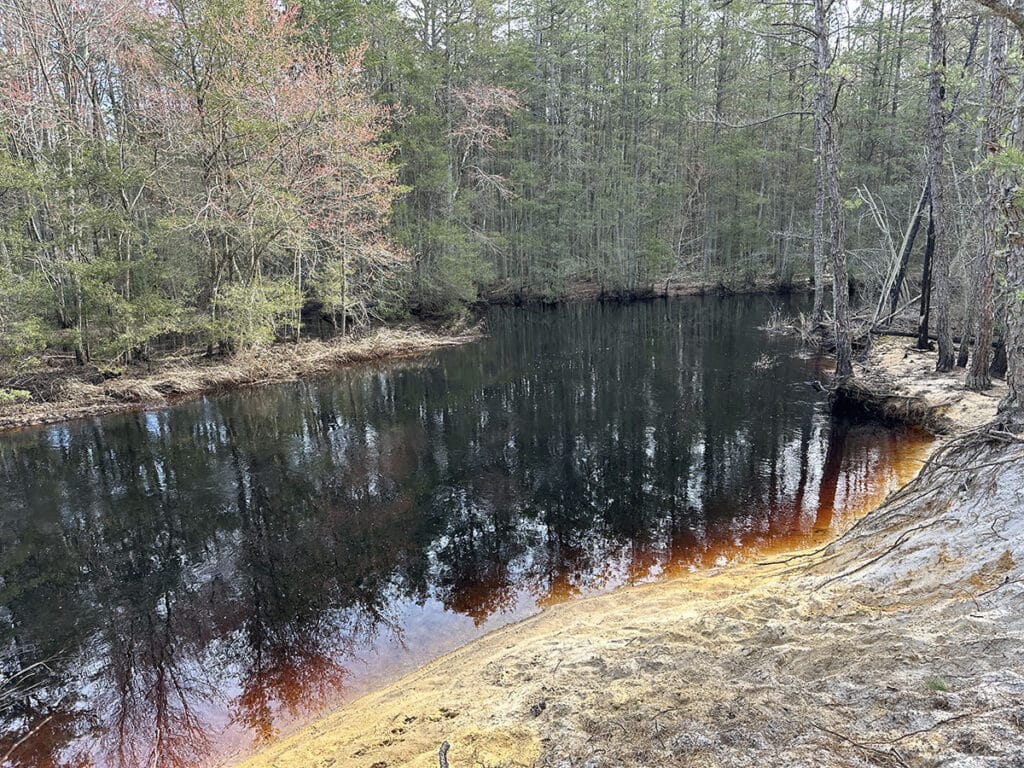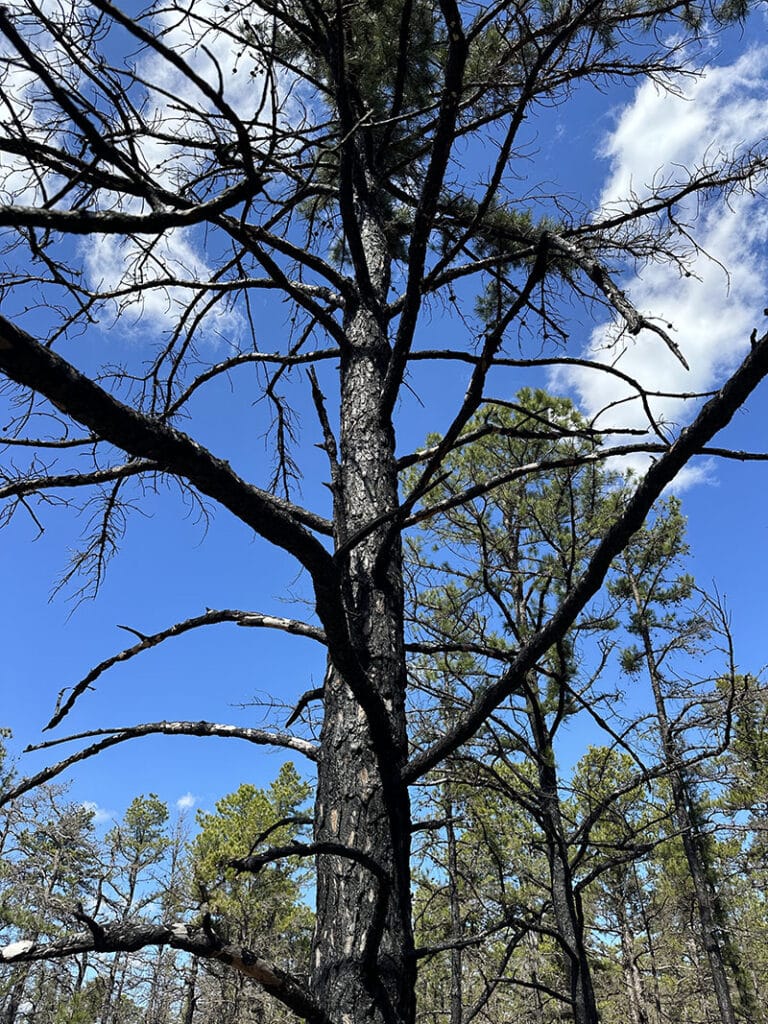March 2024 saw us hit the trail with an “introduction to backpacking” trek to New Jersey’s Wharton State Forest as part of our upcoming return to Philmont.
It’s our traditional starter trek, which is meant to introduce new scouts and leaders to backpacking. It also gives more experienced scouters an opportunity to get out their gear and remember how to use it.
A Flat, Sandy Introduction to Backpacking
Wharton State Forest is located in the Pine Barrens of southern New Jersey (the stomping grounds of the infamous Jersey Devil).
The Pine Barrens are known for being flat, sandy and – of course – filled with pine trees, so it makes for a good introduction to backpacking. The trip is simple enough: we start at Batsto Village at the southern end of the park, which has a good parking lot, the park office (and bathrooms) and ready access to water.
We then hike about 5 miles north along the yellow-blazed Mullica River trail to our camp site on the Mullica River itself. We camp overnight, then head back out.
As a hike, this shouldn’t be too difficult. Average walking pace for people who are comfortable with their packs on even terrain is probably about 3 miles per hour (more if you’re in good shape, with experienced people).
Normally, we don’t do that well. Or even close to it. This is an introduction to backpacking, so we focus a lot on the things that people need to learn:
- What blisters and chaffing feel like and how to avoid them.
- What ticks are, how to protect yourself from them, and how to remove them if you get one
- How a pack should feel (resting comfortably on your hips, minimal weight on your shoulders, well distributed) and how it shouldn’t (painful, lopsided, overly constraining)
- How much weight you should be carrying (about 25% of your body weight)
With new folks, these lessons can take hours. Backpacks can be a difficult item to fit, and when you’re working with people of varying ages and body sizes/shapes, it can take a while to fit things correctly. For example, many of our scouts are beanpoles, which means they don’t have much padding (if any) on their hips. That makes having the weight rest on their hips much more difficult; we struggled for years to find a pack that worked well for my son because of this.
When packs (or boots or socks or, well, you get the idea) don’t fit well, it leads to lots of small stops which add up to big delays. It can take us five hours to get to the camp site, but hey, it’s a learning experience … and we’re in no hurry.
That said, this year it went remarkably smoothly. Pack checks and adjustments were minimal, and we made it to our campsite in record time. We did even better on the way out, which is honestly remarkable.
We also did well with our gear. Another leader and I have Whisperlight stoves, which use liquid fuel and are notorious for creating soccer ball-sized balls of flame when you’re learning how to use them. In the past, we’ve struggled a bit with the stoves, but we’re finally comfortable with them. That translates to lighting the stoves on the first try and limiting the flames to something around the size of a baseball.
Hurt Shoulder and a PT Future
Physically, I felt ok after this trek, but it wasn’t a particularly strenuous hike. My biggest challenge is my left shoulder. A few weeks ago, I nearly stepped on our current Seeing Eye puppy while going down the stairs. I fell backward, and I caught myself with my left hand … but badly jammed my left shoulder in the process.
I’d already been to physical therapy for that shoulder back in the fall for the unrelated injury of getting older (I don’t know what to say – the first time around, it just started hurting for no good reason). I strongly suspect I’ve got another round of PT to look forward to later this spring, but it has to be done. Going back to Philmont with an achy shoulder would be miserable.
Thinking about Potential Treks
We don’t have another backpacking trip scheduled at this point, but I’m hoping we’ll be able to get in another trek or two over the summer. Our next big hiking adventure will be a 20-mile hike along the Delaware & Lehigh Trail in May. We’re doing it so one of our scouts can complete the Hiking merit badge – the final merit badge he needs for Eagle – and it’s going to be an all-day journey.
We’re hiking from the Forks of the Delaware in Easton, Pa. (Where the Delaware and Lehigh Rivers meet) to Bethlehem, Pa., where we’ll have a nice lunch. Then we’ll turn around and head back to Easton. Gear-wise, I’ll be bringing my 22-liter Osprey Talon day pack, a liter or so of water, and some snacks. Much of the trail is paved, so I’ll most likely wear my running sneakers instead of hiking books. We did the 15-mile version of this trek a year or two ago, and the pavement was hell on our boot-clad feet.
What I’d really like to do is get out on the Appalachian Trail for another multi-day backpacking trip, but we’ll see how that goes. With my son getting ready for college, and leader schedules being what they are, that could be difficult to arrange.

